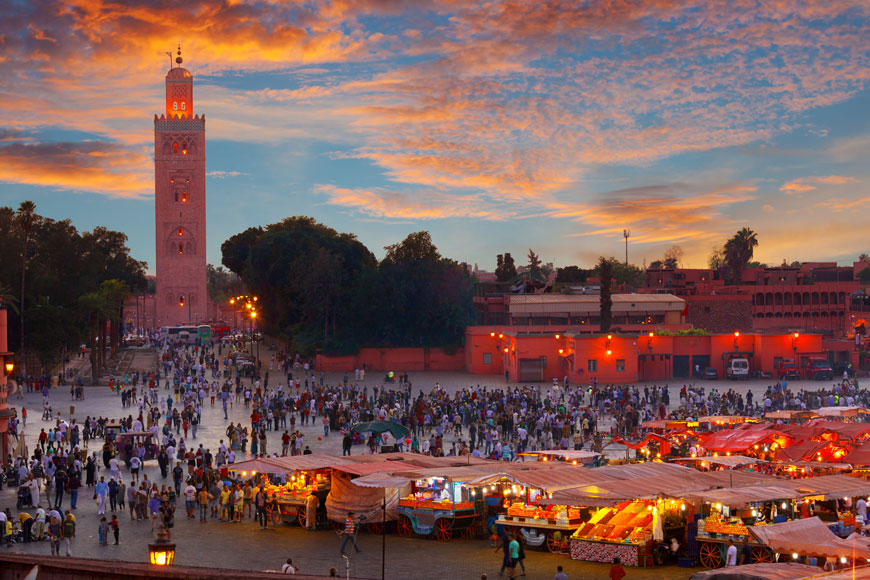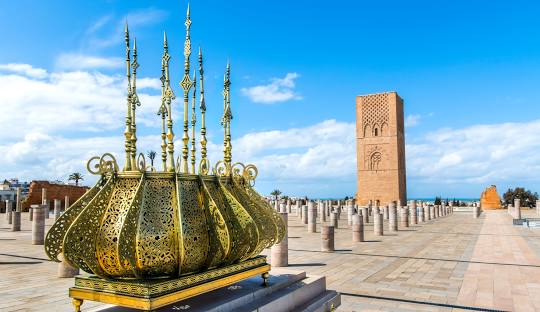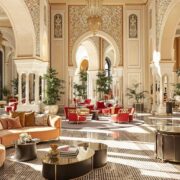
History and Culture of Marrakech: A Journey Through Time
Marrakech, often referred to as the “Red City” due to its distinctive red sandstone buildings, is a city steeped in history and rich in culture. Founded nearly a thousand years ago, this Moroccan gem has witnessed the rise and fall of dynasties, the ebb and flow of trade routes, and the fusion of diverse cultural influences. In this article, we take you on a journey through time to explore the captivating history and vibrant culture of Marrakech.
The Foundation and Early Days
Marrakech was founded in 1070 by the Almoravid dynasty. Under their rule, the city rapidly grew into an influential cultural, religious, and trading center. The Almoravids built several key structures, including mosques and palaces, and established Marrakech as a hub for scholars and artists.
The Almohad Dynasty and Architectural Flourish
In the 12th century, the Almohad dynasty conquered Marrakech, bringing a new era of architectural and cultural development. They constructed the iconic Koutoubia Mosque, whose towering minaret still dominates the city’s skyline. The Almohads were known for their patronage of the arts and sciences, leading to a flourishing of intellectual and artistic endeavors.
Saadian Dynasty: A Golden Age
The 16th century marked the arrival of the Saadian dynasty, under whose reign Marrakech experienced a golden age. The Saadians were great patrons of architecture and left behind some of the city’s most exquisite buildings. The Saadian Tombs, rediscovered in 1917, are a testament to their architectural brilliance, featuring intricate carvings and stunning tile work.
The Alaouite Dynasty and Modernization
In the 17th century, the Alaouite dynasty took control and continues to rule Morocco to this day. Marrakech saw significant modernization during this period, blending traditional Moroccan architecture with new influences. The Bahia Palace, with its lush gardens and ornate interiors, exemplifies this era’s opulence.
The French Protectorate and Contemporary Times
The early 20th century brought Marrakech under French control, leading to a unique blend of French and Moroccan cultures. The establishment of the new city, Gueliz, introduced European-style buildings and infrastructure while preserving the historical medina’s charm. Since gaining independence in 1956, Marrakech has continued to evolve, becoming a global tourist destination renowned for its heritage and hospitality.
Cultural Mosaic: Traditions and Festivals
Marrakech is a vibrant mosaic of Berber, Arab, and Andalusian influences. This cultural diversity is evident in the city’s traditions, music, and cuisine. The bustling souks of the medina are a sensory overload, offering everything from spices and textiles to handcrafted jewelry and pottery.
Festivals play a significant role in the cultural life of Marrakech. The Marrakech International Film Festival attracts global talent and cinephiles, while traditional celebrations like the Moussem of Sidi Bel Abbas showcase local customs and religious fervor.
Exploring the Historical Sites
Visitors to Marrakech can immerse themselves in its rich history by exploring numerous historical sites. The Medina of Marrakech, a UNESCO World Heritage site, is a labyrinth of narrow alleys, vibrant markets, and historic buildings. The El Badi Palace, once a symbol of Saadian wealth and power, now stands in majestic ruins, offering a glimpse into the past.
The Ben Youssef Madrasa, one of the largest theological colleges in North Africa, is another architectural marvel with its stunning courtyard and intricately carved decorations. The Majorelle Garden, created by French painter Jacques Majorelle and later restored by designer Yves Saint Laurent, is a serene oasis that reflects the city’s artistic heritage.
Marrakech is not just a city; it is a living testament to the rich tapestry of history and culture that has shaped it over centuries. From its ancient medina to its vibrant contemporary scene, Marrakech offers a journey through time that captivates the senses and enriches the soul. Whether you’re wandering through its historic sites, enjoying its diverse festivals, or simply soaking in the atmosphere, Marrakech invites you to experience its unique blend of past and present.
4o
Recent Posts
Empowering Adventures: A Solo Female Travel Guide to Morocco in 2025
Affordable Ways to Fly to Marrakech from Manchester: Your Ultimate Guide
Experience Luxury at the Hotel Sofitel Lounge and Spa Marrakech: A Gateway to Relaxation and Elegance

Marrakech

Chefchaouen




